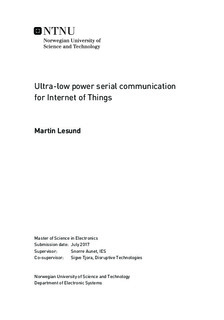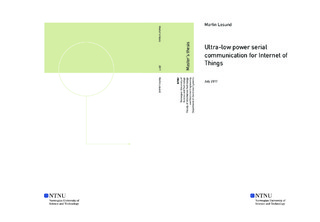| dc.description.abstract | This master thesis is about finding a suitable bus protocol to use on an ultra low power IoT device. The bus protocols I2C, 1-Wire, SPI, and MBus is compared by different parameters and previous power measurement experiments. Both Mbus and SPI uses substantially less power compared to the other interfaces. The SPI protocol is suggested as a good communication solution, and for this reason an SPI master design is made from scratch. The RTL code is written in VHDL and different energy techniques is used to make it more suitable for ultra low power devices. The SPI master design is implemented on an FPGA on the "Zedboard development kit" which is connected to an external temperature sensor called "LM74". Then a custom test application runs on the "Zedboard" to evaluate the functionality of the SPI master. The data read from the sensor is outputted on a serial terminal to the computer. The SPI master design functioned as expected and got the correct data from the temperature sensor.
This thesis contains material that sometimes can be overlooked in the design process, namely how the communication is done between integrated circuits. There are several solutions that can do this, and some communication solutions is better suited than others. A good communication solution can increase the battery life of an IoT device. This is because the energy used for inter die communication is an important contributor to power dissipation, which is important to keep as low as possible when it comes to ultra low power systems.
This thesis is a collection of some of the most common bus protocols in serial communication, and makes arguments why the SPI interface can be the most suitable for your design. To further prove this argument an SPI master design is made and tested on an FPGA with a temperature sensor to verify the functionality of the design. | |

